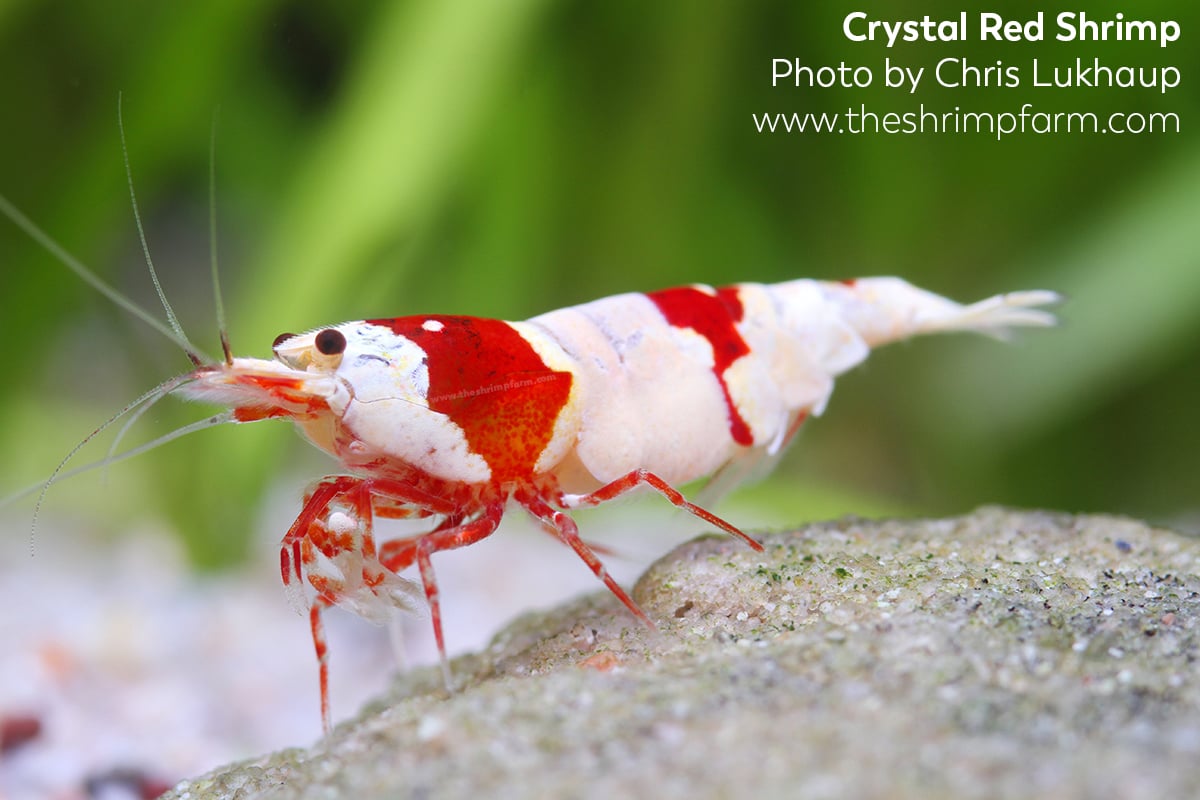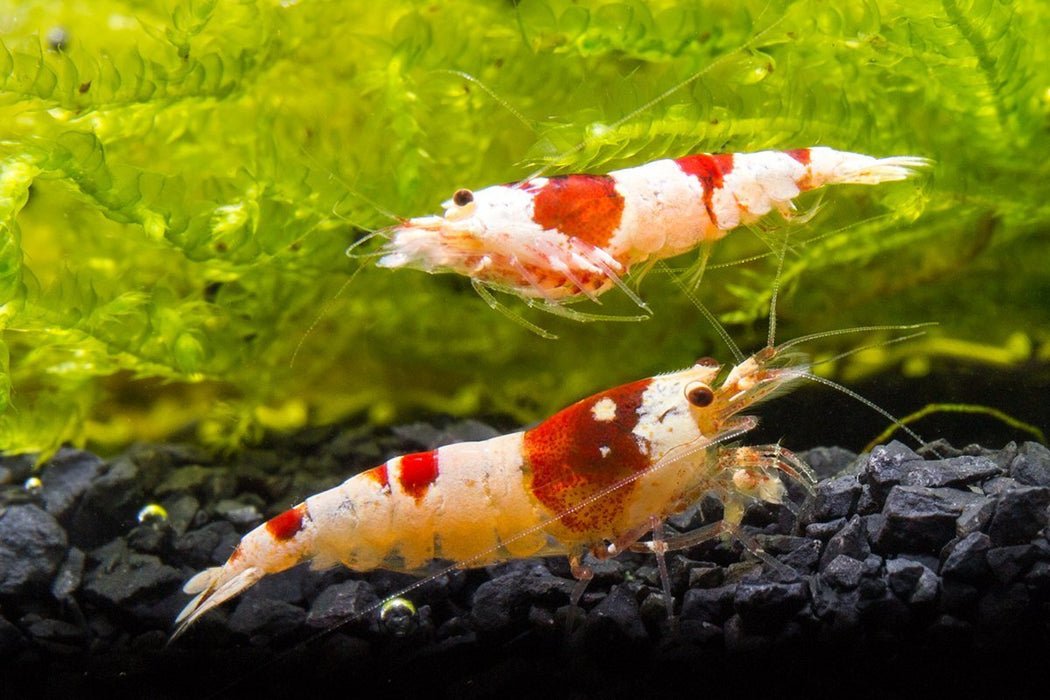Crystal Black Shrimp face health issues like bacterial infections and poor water quality. These problems can lead to stress and death.
Crystal Black Shrimp are popular in the aquarium hobby due to their striking appearance. They require specific care to thrive. Proper water quality, a balanced diet, and regular tank maintenance are crucial. Avoid sudden changes in water parameters to prevent stress.
Overfeeding can cause poor water quality, leading to health issues. Regularly check for signs of bacterial infections or parasites. Healthy shrimp display vibrant colors and active behavior. Maintaining a stable, clean environment helps ensure their well-being. A well-cared-for shrimp colony adds beauty to any aquarium. Investing time in their care results in a thriving, visually appealing tank.

Credit: www.ebay.com
Introduction To Crystal Black Shrimp
Crystal Black Shrimp are small, fascinating creatures. They are popular in many aquariums. Keeping them healthy requires understanding their needs.
Origin And Habitat
Crystal Black Shrimp originate from Taiwan. They thrive in clean, freshwater streams. These streams have soft, acidic water with stable temperatures. The natural habitat influences their care in aquariums.
Popularity In Aquariums
Many aquarium enthusiasts love Crystal Black Shrimp. They are known for their striking black and white patterns. Their small size makes them suitable for nano tanks. Observing their behavior is both educational and entertaining.
Common Health Issues
Crystal Black Shrimp are delicate creatures. They are prone to various health issues. Keeping them healthy requires attention to detail and a clean environment. This section covers common health issues you may encounter.
Bacterial Infections
Bacterial infections are common in Crystal Black Shrimp. Poor water quality often causes these infections. Symptoms include lethargy, loss of appetite, and color changes.
To prevent bacterial infections:
- Maintain clean water conditions.
- Perform regular water changes.
- Use a good quality filter.
Using antibacterial treatments can help. Consult a vet for proper medication.
Fungal Infections
Fungal infections are another common issue. These infections appear as white or gray patches on the shrimp’s body.
Causes of fungal infections include:
- Poor water quality
- Injuries
- Stress
To treat fungal infections, you can use antifungal medications. Ensuring a clean environment helps prevent these infections.
Parasitic Infestations
Parasites are harmful to Crystal Black Shrimp. Common parasites include Vorticella and Scutariella.
Symptoms of parasitic infestations:
- White spots on the body
- Erratic swimming behavior
- Loss of appetite
To prevent parasites, quarantine new shrimp. Regularly clean the tank and use antiparasitic treatments if needed.
Symptoms To Watch For
Crystal Black Shrimp are delicate creatures requiring special care. Knowing their symptoms helps in early detection of health problems. This section will guide you through the signs to watch for in your shrimp.
Behavioral Changes
Behavioral changes can be the first signs of health issues. Notice if your shrimp are less active or hide more often. Healthy shrimp are usually active and explore their environment. Watch for unusual swimming patterns, like erratic or spiraling movements. If your shrimp are not eating, this could be a sign of stress or illness.
Physical Signs
Physical signs are crucial indicators of shrimp health. Check for any discoloration or spots on their body. Healthy Crystal Black Shrimp have a consistent black and white coloration. Look for missing or damaged limbs, as these can indicate physical trauma or disease. Swollen or cloudy eyes are also red flags for underlying issues.
| Symptom | Description |
|---|---|
| Discoloration | Inconsistent black and white colors |
| Damaged Limbs | Missing or broken legs and antennae |
| Swollen Eyes | Puffy or cloudy eyes |
Water Quality Indicators
Water quality is vital for shrimp health. Poor water conditions can cause stress and disease. Keep an eye on the water’s pH, ammonia, and nitrate levels. Regularly test the water to ensure it meets the ideal parameters.
- pH level: 6.2 to 6.8
- Ammonia: 0 ppm (parts per million)
- Nitrate: Less than 20 ppm
Cloudy water or foul odors can also indicate poor water quality. Ensure you perform regular water changes to keep the environment clean and healthy for your shrimp.

Credit: www.amazon.com
Preventive Measures
Preventive measures are crucial for maintaining the health of your Crystal Black Shrimp. By implementing these measures, you can significantly reduce health issues. Below are some essential practices to keep your shrimp healthy.
Water Quality Maintenance
Water quality plays a vital role in shrimp health. Poor water conditions can cause stress and disease. Ensure the water parameters are stable.
- pH Levels: Keep the pH between 6.0 and 6.5.
- Temperature: Maintain the water temperature between 70°F and 74°F.
- Ammonia and Nitrite: Both should be at 0 ppm.
- Nitrate: Keep nitrate levels below 20 ppm.
Use a reliable water testing kit to monitor these parameters regularly. Perform weekly water changes of 10-20% to maintain water quality.
Proper Diet
A balanced diet is essential for the health of Crystal Black Shrimp. Provide a mix of high-quality shrimp pellets, algae wafers, and blanched vegetables.
| Food Type | Frequency |
|---|---|
| Shrimp Pellets | Daily |
| Algae Wafers | Every other day |
| Blanched Vegetables (Spinach, Zucchini) | Twice a week |
Ensure the food is free of pesticides and chemicals. Avoid overfeeding, as uneaten food can degrade water quality.
Quarantine Procedures
Quarantining new shrimp is a crucial step to prevent diseases. A quarantine tank helps isolate new shrimp and monitor their health.
- Set up a quarantine tank with similar water conditions as the main tank.
- Observe the new shrimp for at least 2 weeks.
- Look for signs of disease or stress.
- If any issues arise, treat them in the quarantine tank.
After the quarantine period, gradually introduce the new shrimp to the main tank. This practice helps maintain the health of your entire shrimp colony.
Care Tips For Sick Shrimp
Crystal Black Shrimp are delicate creatures. They need special attention when sick. These shrimp can face various health problems. Knowing how to care for them is crucial. Below are helpful tips to ensure your sick shrimp recover quickly.
Isolating The Affected
First, isolate the sick shrimp from the others. Use a separate tank for this purpose. Ensure the tank has similar water conditions. This prevents the spread of disease.
Isolating helps you monitor the sick shrimp closely. You can also provide special care without disturbing others. Make sure the tank is clean and well-aerated.
Medication Options
Choose the right medication for your shrimp. Consult a vet if unsure. Some common medications include:
- Antibiotics: For bacterial infections.
- Antifungals: For fungal infections.
- Anti-parasitics: For parasitic issues.
Follow the dosage instructions carefully. Overdosing can harm the shrimp. Always use shrimp-safe medications.
Monitoring Recovery
Keep a close eye on the shrimp’s progress. Check for signs of improvement daily. Look for changes in behavior and appetite. Record these observations.
Offer a balanced diet to boost their immunity. Remove any uneaten food to keep the tank clean. Continue monitoring until the shrimp shows no signs of illness.
Below is a sample table for tracking shrimp health:
| Date | Behavior | Appetite | Notes |
|---|---|---|---|
| Day 1 | Lethargic | Poor | Started antibiotic treatment |
| Day 2 | Slightly active | Improving | Continued medication |
Importance Of Tank Environment
Crystal Black Shrimp are sensitive creatures. Their health depends on a proper tank environment. A well-maintained tank ensures they thrive and live longer.
Optimal Water Parameters
Water quality is crucial for Crystal Black Shrimp. Here are the optimal water parameters:
| Parameter | Ideal Range |
|---|---|
| Temperature | 70-78°F (21-25°C) |
| pH | 6.2-6.8 |
| GH (General Hardness) | 4-6 dGH |
| KH (Carbonate Hardness) | 0-2 dKH |
| TDS (Total Dissolved Solids) | 100-200 ppm |
Maintaining these parameters is vital. Water changes should be done weekly. Monitor water quality regularly to ensure shrimp health.
Suitable Tank Mates
Choosing the right tank mates is important. Crystal Black Shrimp are peaceful. They need calm, non-aggressive companions. Suitable tank mates include:
- Neon Tetras
- Otocinclus Catfish
- Small Snails
- Dwarf Corydoras
Avoid large or aggressive fish. They can stress or harm the shrimp. Always research before adding new tank mates.
Aquarium Plants And Hiding Spots
Plants and hiding spots create a safe environment. They provide shelter and reduce stress. Good plant choices include:
- Java Moss
- Anubias
- Java Fern
- Cryptocoryne
Use driftwood and rock caves as hiding spots. These areas help shrimp feel secure. More hiding spots lead to healthier shrimp.
Remember, a well-designed tank environment is key. It ensures your Crystal Black Shrimp stay healthy and happy.
Regular Health Checks
Maintaining the health of your Crystal Black Shrimp is crucial. Regular health checks help you identify issues early and keep your shrimp in top condition. This guide covers visual inspections, water testing, and routine maintenance to ensure your shrimp stay healthy.
Visual Inspections
Performing visual inspections is essential. Look for signs of distress or illness. Check for the following:
- Unusual Colors: Faded or darkened colors indicate health problems.
- Behavior Changes: Lethargy or unusual swimming patterns are red flags.
- Physical Damage: Check for missing limbs or antennae.
Use a magnifying glass for a closer look. This helps spot small issues early.
Water Testing
Water quality is vital for shrimp health. Regular water testing ensures safe living conditions. Test for the following parameters:
| Parameter | Ideal Range |
|---|---|
| pH Level | 6.2 – 6.8 |
| Ammonia | 0 ppm |
| Nitrites | 0 ppm |
| Nitrates | < 20 ppm |
Use a reliable test kit. Maintain the ideal ranges for a healthy shrimp environment.
Routine Maintenance
Routine maintenance is key to preventing health issues. Follow these steps regularly:
- Water Changes: Change 10-20% of the water weekly.
- Clean Substrate: Vacuum the substrate to remove debris.
- Filter Maintenance: Clean or replace filter media monthly.
Routine maintenance keeps the tank clean and your shrimp healthy.

Credit: www.theshrimpfarm.com
Frequently Asked Questions
How Long Do Crystal Shrimp Live For?
Crystal shrimp live for about 1 to 2 years. Proper care and a stable environment can help them thrive.
What Grade Are Crystal Black Shrimp?
Crystal black shrimp are graded by their color and pattern. Grades range from C to SSS. Higher grades have more white and clearer patterns.
Why Are My Crystal Shrimp Dying?
Crystal shrimp may die due to poor water quality, incorrect pH levels, or inadequate diet. Ensure proper tank conditions and balanced nutrition.
How Can You Tell If Shrimp Are Sick?
Sick shrimp show signs like lethargy, discoloration, unusual swimming, or loss of appetite. Check for cloudy eyes or spots.
Conclusion
Maintaining the health of Crystal Black Shrimp is crucial. Regular water changes and a balanced diet are essential. Monitor water parameters closely to prevent diseases. By following these steps, you can ensure your shrimp thrive. A healthy environment will lead to vibrant and active Crystal Black Shrimp in your aquarium.
